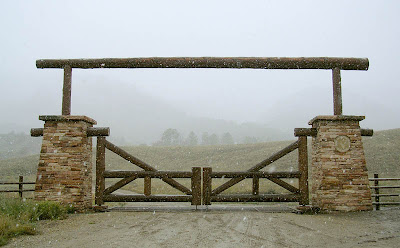It's always interesting to see homes and interiors around the world that are influenced by the geography and history of the area. Even within North America there are subtle (and sometimes not so subtle) differences in home and decorating styles according to the city or region. Everyone, of course, has their own favourite style - modern, traditional, rustic, retro, etc. - but within those styles it's nice to try to give a nod to the town in which you live.
My hometown at the moment is Calgary, Alberta, Canada, one of the most energetic and fastest-growing cities in North America.
Calgary is situated in the heart of the western prairies at the base of the Rocky Mountains, and it is also now one of the biggest oil and gas centers in the world. The history of ranchers, farmers and cowboys mixed with the new world of energy entrepreneurs makes for a really exciting and interesting city.
I love the fast-paced downtown with its trendy urban restaurants and shops, but also enjoy the relaxed weekend vibe, when everyone day-trips to hike or ski in the mountains or explore the wide-open spaces that surround the city on all sides. Despite its exponential growth over the last couple of decades, Calgary retains a warm, small-town feel that pays homage to its wild west roots.
Home and building design in Calgary reflects all of its history, old and new. There are modern skyscrapers with minimalist urban condos, as well as very large ranch-style homes set on acreages that overlook the fields and mountains. And there are also cozy ski lodges and homes in the mountains that reflect the beauty that sits at their doorsteps.
Calgarians lead a "work hard, play hard" kind of lifestyle, and most homes in this area reflect that. Modern conveniences and simple, clean-lined styles are the norm, but always with a reflection of nature that adds a comfortable and welcoming vibe.
Wooden elements, including floors, exposed beams, doors and walls are a common design element.
Open-plan living is popular, reflecting the wide-open spaces of the prairies.
High ceilings and lots of windows let in natural light and views of the mountains.
Don't you love Calgary now? If you ever visit, give me a shout!
I hope you will also jump over to Centsational Girl, where you will find a bunch of other hometown stories like mine.




































